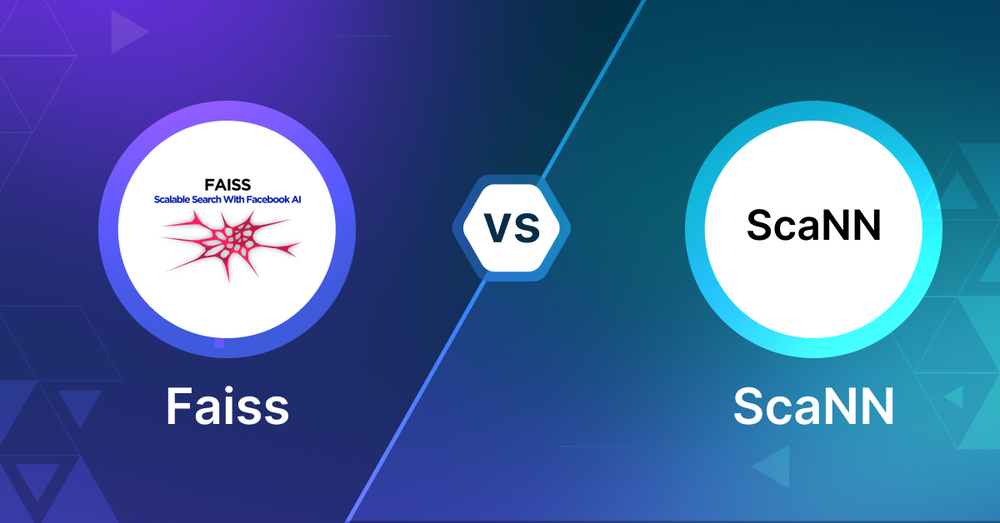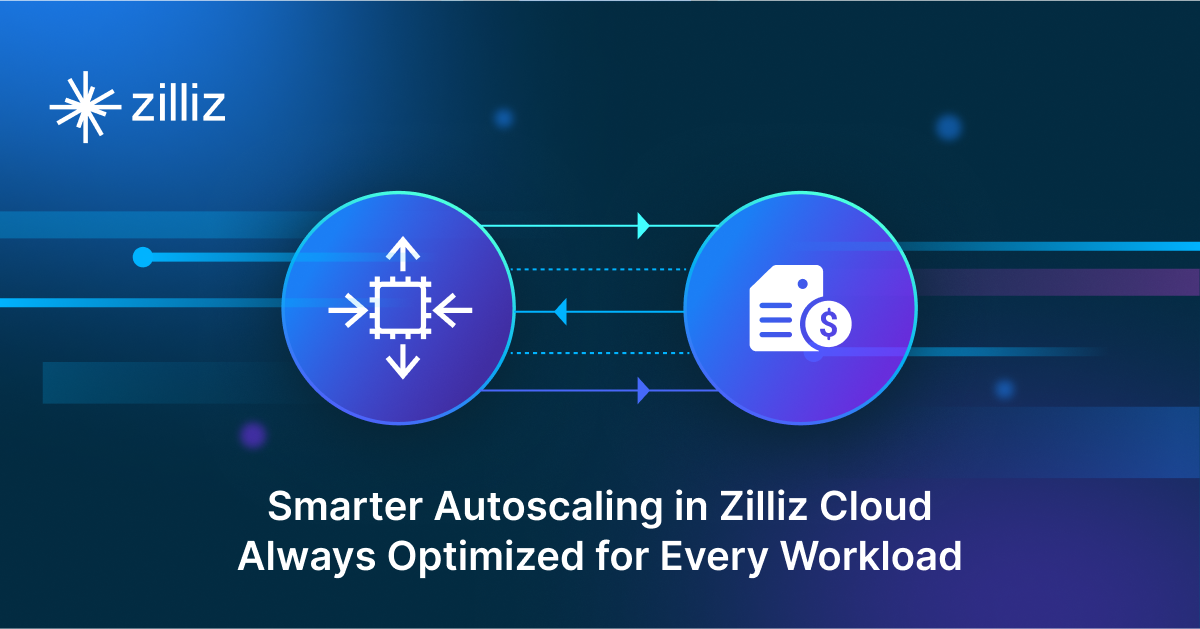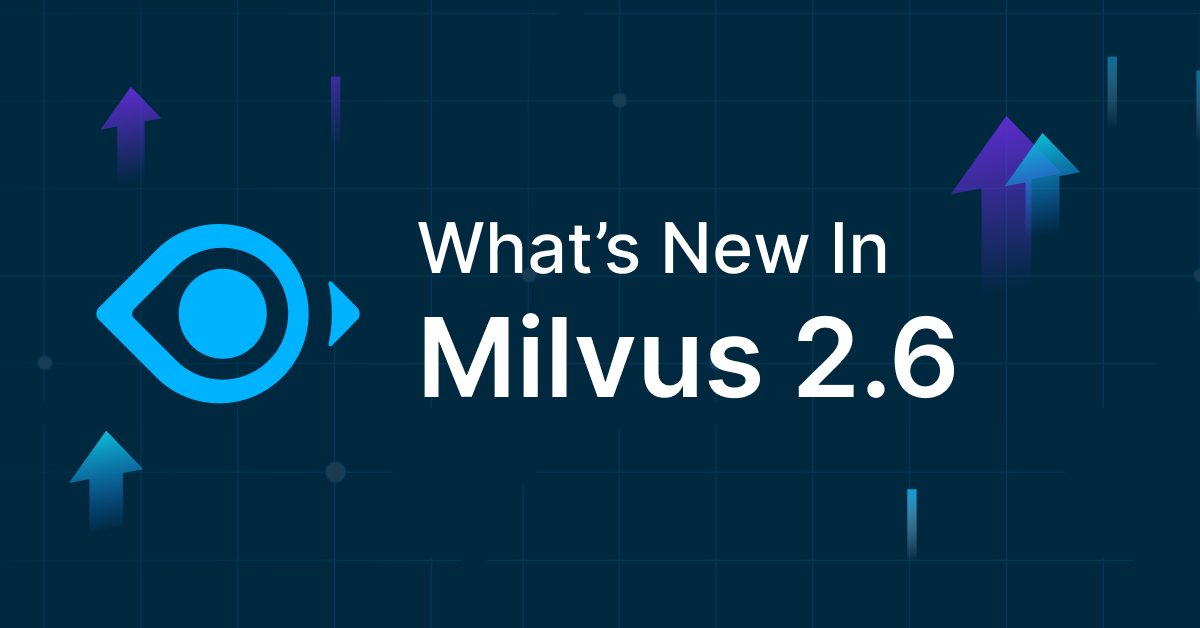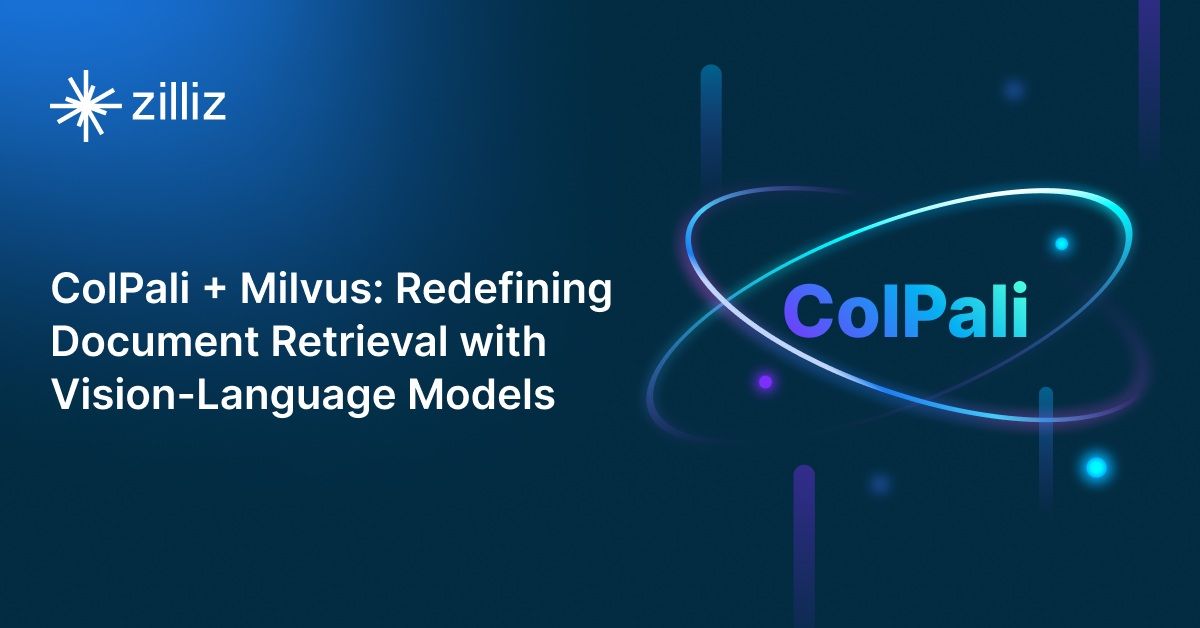Faiss vs ScaNN: Choosing the Right Vector Search Tool for Your Application

Introduction
As AI continues to reshape industries, vector search has become essential for applications like product recommendations, natural language processing (NLP), and image analysis. Efficient vector search allows developers to quickly retrieve similar vectors from large datasets, enhancing the performance of AI-driven solutions. Two popular tools that offer vector search capabilities are Faiss and ScaNN. Each has distinct strengths and is optimized for different use cases.
In this article, we’ll compare Faiss and ScaNN, helping you understand their features, how they handle data, and which one is best suited for your project.
What is Vector Search?
Before diving into the specifics of Faiss vs ScaNN, it's essential to understand vector search. Simply put, Vector search, or vector similarity search, finds the closest vectors (data points) in a high-dimensional space to a given query vector. These vectors are often generated by machine learning models to capture the essence of the unstructured data (e.g., the meaning of a sentence or the features of an image).
Unlike traditional databases, where searches are based on exact matches or filtering, vector search focuses on similarity. The goal is to find vectors that are "close" to each other based on a distance metric (such as Euclidean distance or cosine similarity). For instance, vectors can represent words or sentences in natural language processing (NLP), and vector search helps find the most semantically similar words or texts. In recommendation systems, vector search identifies items closest to a user's preferences. Vector searches also play a crucial part in retrieval augmented generation (RAG), a technique that augments the output of large language models (LLMs) by providing them with extra contextual information.
There are many solutions available on the market for performing vector searches, including:
- Vector search libraries such as Faiss and ScaNN.
- Purpose-built vector databases such as Milvus, Zilliz Cloud (fully managed Milvus)
- Lightweight vector databases such as Chroma and Milvus Lite.
- Traditional databases with vector search add-ons
What is Faiss? An Overview
Faiss (Facebook AI Similarity Search) is an open-source library developed by Facebook AI Research. It’s designed to handle large-scale nearest neighbor search and clustering of dense vectors. Faiss is known for its ability to balance speed, scalability, and accuracy, making it a popular choice for AI and machine learning workflows.
Faiss Core Features and Strengths
One of Faiss’s key strengths is its flexibility. It supports both exact and approximate nearest neighbor (ANN) searches, allowing users to decide whether they want faster searches or higher accuracy. Faiss is also optimized to handle very large datasets, capable of scaling to billions of vectors.
- GPU Acceleration: Faiss has built-in support for GPU acceleration, which significantly boosts performance for large-scale searches. It is a go-to option for low-latency applications where search speed is critical.
- Indexing Methods: Faiss offers a variety of indexing methods, such as IVF (Inverted File Index) and PQ (Product Quantization), which optimize memory usage and speed. These methods allow users to reduce the search space, making searches more efficient without compromising too much on accuracy.
How Faiss Integrates Vector Search
Faiss allows users to choose different search methods based on their needs. For example, exact search can be used when high precision is required, while approximate search is ideal when speed is more important. Faiss’s ability to balance these factors makes it highly adaptable to a variety of use cases.
What is ScaNN? An Overview
ScaNN (Scalable Nearest Neighbors) is an open-source library developed by Google, designed for fast, approximate nearest neighbor searches in large-scale datasets. ScaNN is optimized for machine learning applications, particularly those involving embeddings, such as image and text search.
ScaNN Core Features and Strengths
ScaNN is designed to be highly efficient, with an emphasis on speed and accuracy. Unlike Faiss, which offers both exact and approximate search, ScaNN focuses exclusively on approximate nearest neighbor search (ANNS), making it a better choice when speed is the priority.
- Partitioning and Quantization: ScaNN uses advanced techniques like partitioning and asymmetric hashing to speed up search queries. It also supports vector compression, which reduces memory usage, making it scalable even for large datasets.
- TensorFlow Integration: ScaNN integrates seamlessly with TensorFlow, making it particularly well-suited for machine learning workflows. This integration allows developers to incorporate vector search into their AI pipelines without significant overhead.
How ScaNN Handles Vector Search
ScaNN’s focus on approximate search allows it to handle large datasets with minimal latency. It uses a combination of partitioning and quantization techniques to narrow down the search space, which speeds up queries while maintaining a high degree of accuracy.
Key Differences Between Faiss and ScaNN
Although both Faiss and ScaNN are designed to perform efficient vector search, they differ in key areas such as search methodology, data handling, and scalability. Let’s take a closer look at the differences between these two tools.
Search Methodology
Faiss offers both exact and approximate search methods, allowing users to choose the approach that best fits their use case. For approximate searches, Faiss uses techniques like IVF and PQ to divide the dataset into smaller clusters, which speeds up the search process. For exact searches, Faiss performs a brute-force comparison across all vectors, ensuring high accuracy.
ScaNN, on the other hand, focuses solely on approximate nearest neighbor search. It achieves this using partitioning and quantization techniques that reduce the search space, allowing for faster query times. ScaNN is particularly optimized for high-speed search in machine learning workflows, where absolute accuracy can be traded off for speed.
Data Handling
When it comes to data handling, Faiss and ScaNN take different approaches. Faiss is designed to handle very large datasets, with support for both CPU and GPU-based searches. Faiss uses indexing methods like product quantization to compress the dataset, allowing it to operate efficiently even with billions of vectors.
ScaNN, in contrast, is focused on in-memory searches, optimizing performance through vector compression and quantization. ScaNN excels when the dataset can be held in memory, providing low-latency searches that are especially useful in AI applications involving embeddings.
Scalability and Performance
Faiss is known for its ability to scale to massive datasets. Its various indexing methods allow users to allocate memory and prioritize speed or accuracy. Faiss also supports GPU acceleration, which makes it ideal for large-scale applications where real-time search performance is critical.
ScaNN is optimized for speed and efficiency in handling large datasets, particularly in the context of machine learning. By using techniques like asymmetric hashing and partitioning, ScaNN can scale effectively without requiring large amounts of computational resources. However, unlike Faiss, ScaNN doesn’t offer GPU support, which may limit its performance in certain scenarios.
Flexibility and Customization
In terms of flexibility, Faiss offers more customization options. Users can choose from a variety of indexing methods, including flat indexing, IVF, and PQ, to optimize performance based on their specific requirements. Faiss also allows users to fine-tune the balance between accuracy and speed, giving them more control over how the search is conducted.
ScaNN is more focused on providing high-speed searches with minimal customization. While it offers some options for tuning accuracy versus speed, it doesn’t provide as many configuration choices as Faiss. This makes ScaNN easier to use for developers who want fast searches without needing to fine-tune their system, but it lacks the flexibility that Faiss offers.
Integration and Ecosystem
Faiss integrates well with a variety of machine learning and AI frameworks, and its GPU support makes it highly effective for low-latency applications. It’s a popular choice among data scientists and engineers working with large datasets and looking to build scalable, real-time search systems.
ScaNN, by contrast, is tightly integrated with TensorFlow, making it the go-to option for TensorFlow users who want to incorporate vector search into their workflows. This integration simplifies the process of adding vector search functionality to machine learning models.
Ease of Use
Faiss is more complex than ScaNN in terms of setup and configuration. The variety of indexing methods and the need to choose between exact and approximate search means that developers may need to spend more time understanding how to best configure Faiss for their use case.
ScaNN, on the other hand, is simpler to set up. Its focus on approximate search and tight integration with TensorFlow means developers can quickly integrate it into their existing workflows with minimal overhead. However, for those who aren’t using TensorFlow, Faiss may offer more versatility.
Cost Considerations
Faiss supports GPU acceleration, which can reduce query times but may increase hardware costs, depending on your infrastructure. However, Faiss’s ability to balance between memory usage and search speed can help keep operational costs down.
ScaNN, while optimized for fast in-memory searches, doesn’t offer GPU support, meaning it’s less likely to incur additional hardware costs. However, the need to keep data in memory may require more RAM, particularly for large datasets, which could increase costs.
Security Features
Neither Faiss nor ScaNN comes with built-in security features like encryption or access control. Any security requirements, such as data encryption or authentication, need to be implemented at the application level. Users can choose a purpose-built vector database like Milvus instead, which provides advanced enterprise-level features.
When to Choose Faiss
Faiss is the better choice if you’re working with very large datasets that require either exact or approximate searches. Its flexibility and GPU support make it ideal for applications that need to balance speed and accuracy while scaling to billions of vectors.
Use Faiss if your project focuses on:
- Real-time search systems that require low-latency queries.
- Massive datasets where memory efficiency and GPU acceleration are important.
- Applications that need exact search capabilities in addition to approximate search.
When to Choose ScaNN
ScaNN is ideal for applications where speed and approximate search are the primary concerns. Its integration with TensorFlow makes it particularly well-suited for machine learning pipelines, especially those involving embeddings.
Use ScaNN if your project involves:
- Machine learning models where fast, approximate nearest neighbor search is required.
- TensorFlow-based applications that need efficient vector search.
- Applications where low-latency search is critical but GPU support isn’t necessary.
Comparing Vector Search Libraries and Purpose-built Vector Databases
Both vector search libraries like Faiss and ScaNN and purpose-built vector databases like Milvus aim to solve the similarity search problem for high-dimensional vector data, but they serve different roles.
Vector search libraries focus solely on the task of efficient nearest neighbor search. They offer lightweight, fast solutions for finding vectors similar to a query vector. They are often used in smaller, single-node environments or for applications with static or moderately sized datasets. However, they generally lack features for managing dynamic data, providing persistence, or scaling across distributed systems. Developers using these libraries typically need to manually handle data management, updates, and scaling.
On the other hand, purpose-built vector databases like Milvus and Zilliz Cloud (the managed Milvus) are comprehensive systems designed for large-scale vector data management. These databases go beyond simple vector search, offering features like persistent storage, real-time updates, distributed architecture, and advanced querying capabilities. They support dynamic datasets and can easily handle real-time applications where data is frequently updated. Additionally, vector databases often include integrated support for combining vector searches with traditional filtering and metadata queries, making them ideal for production environments requiring scalability, high availability, and more complex search functionalities.
- Check out the latest new features and enhancements of Zilliz Cloud: Zilliz Cloud Update: Migration Services, Fivetran Connectors, Multi-replicas, and More
When to Choose Each Vector Search Solution
Choose Vector Search Libraries if:
- You have a small to medium-sized, relatively static dataset.
- You prefer full control over indexing and search algorithms.
- You're embedding search in an existing system and can manage the infrastructure.
Choose Purpose-Built Vector Databases if:
- You need to scale to billions of vectors across distributed systems.
- Your dataset changes frequently, requiring real-time updates.
- You prefer managed solutions that handle storage, scaling, and query optimizations for you.
In summary, vector search libraries are best suited for simpler, smaller-scale use cases where speed and memory efficiency are priorities, but operational complexity is minimal. Purpose-built vector databases, by contrast, are designed for large-scale, production-grade systems that demand dynamic data handling, scalability, and ease of use, often providing significant operational benefits for developers managing complex applications.
Evaluating and Comparing Different Vector Search Solutions
OK, now we've learned the difference between different vector search solutions. The following questions are: how do you ensure your search algorithm returns accurate results and does so at lightning speed? How do you evaluate the effectiveness of different ANN algorithms, especially at scale?
To answer these questions, we need a benchmarking tool. Many such tools are available, and two emerge as the most efficient: ANN benchmarks and VectorDBBench.
ANN benchmarks
ANN Benchmarks (Approximate Nearest Neighbor Benchmarks) is an open-source project designed to evaluate and compare the performance of various approximate nearest neighbor (ANN) algorithms. It provides a standardized framework for benchmarking different algorithms on tasks such as high-dimensional vector search, allowing developers and researchers to measure metrics like search speed, accuracy, and memory usage across various datasets. By using ANN-Benchmarks, you can assess the trade-offs between speed and precision for algorithms like those found in libraries such as Faiss, Annoy, HNSWlib, and others, making it a valuable tool for understanding which algorithms perform best for specific applications.
ANN Benchmarks GitHub repository: https://github.com/erikbern/ann-benchmarks
ANN Benchmarks Website: https://ann-benchmarks.com/
VectorDBBench
VectorDBBench is an open-source benchmarking tool designed for users who require high-performance data storage and retrieval systems, particularly vector databases. This tool allows users to test and compare the performance of different vector database systems such as Milvus and Zilliz Cloud (the managed Milvus) using their own datasets, and determine the most suitable one for their use cases. VectorDBBench is written in Python and licensed under the MIT open-source license, meaning anyone can freely use, modify, and distribute it.
VectorDBBench GitHub repository: https://github.com/zilliztech/VectorDBBench
Take a quick look at the performance of mainstream vector databases on the VectorDBBench Leaderboard.
Techniques & Insights on VectorDB Evaluation:
Further Resources about VectorDB, GenAI, and ML
- Introduction
- What is Vector Search?
- What is Faiss? An Overview
- What is ScaNN? An Overview
- Key Differences Between Faiss and ScaNN
- When to Choose Faiss
- When to Choose ScaNN
- Comparing Vector Search Libraries and Purpose-built Vector Databases
- Evaluating and Comparing Different Vector Search Solutions
- Further Resources about VectorDB, GenAI, and ML
Content
Start Free, Scale Easily
Try the fully-managed vector database built for your GenAI applications.
Try Zilliz Cloud for FreeKeep Reading

Smarter Autoscaling in Zilliz Cloud: Always Optimized for Every Workload
With the latest upgrade, Zilliz Cloud introduces smarter autoscaling—a fully automated, more streamlined, elastic resource management system.

Democratizing AI: Making Vector Search Powerful and Affordable
Zilliz democratizes AI vector search with Milvus 2.6 and Zilliz Cloud for powerful, affordable scalability, cutting costs in infrastructure, operations, and development.

ColPali + Milvus: Redefining Document Retrieval with Vision-Language Models
When combined with Milvus's powerful vector search capabilities, ColPali becomes a practical solution for real-world document retrieval challenges.
The Definitive Guide to Choosing a Vector Database
Overwhelmed by all the options? Learn key features to look for & how to evaluate with your own data. Choose with confidence.